AI vs Manual 3D Modeling: Which is Really Faster for Beginners in 2025?
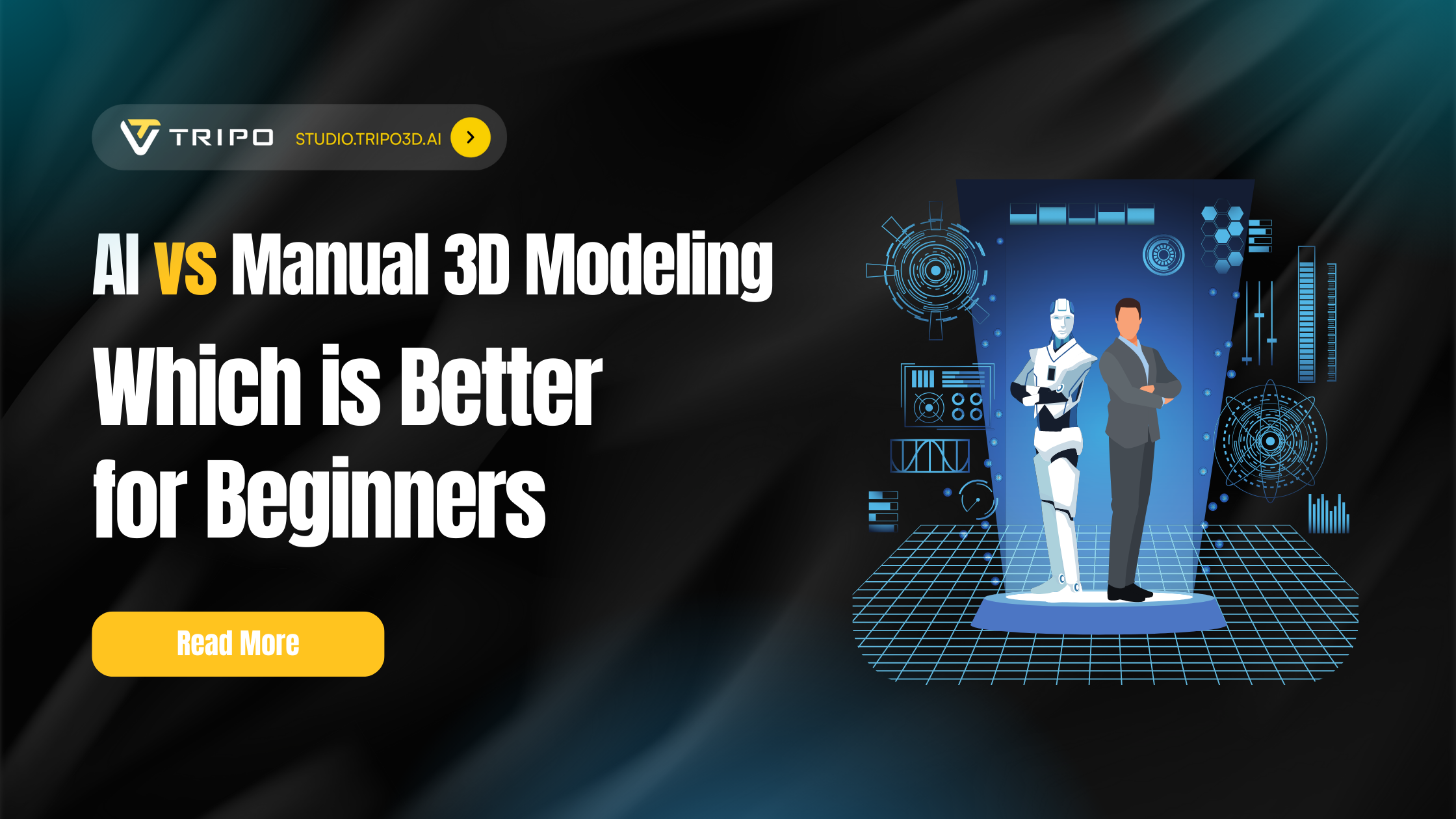
Picture this: You've got a brilliant idea for a 3D character bouncing around in your head. Maybe it's a quirky robot sidekick for your game, or a fantasy creature you've been sketching. Now you need to turn that 2D concept into a 3D model.
You have two paths ahead of you:
Manual 3D Modeling – The traditional route where you fire up software like Blender or Maya and painstakingly craft every polygon by hand. You'll sculpt, retopologize, UV unwrap, and texture your creation from scratch. It's the method professionals have used for decades.
AI 3D Model Generators – The revolutionary new approach where you simply describe what you want (or upload an image), and artificial intelligence creates the entire model for you in minutes. Tools like Tripo AI are making image to 3D conversion as simple as uploading a photo.
But here's the million-dollar question every beginner needs answered: Is AI actually faster than traditional modeling when you factor in everything – from initial creation to final, usable asset? And more importantly, which path should YOU choose?
Let's dive into the real numbers, hidden challenges, and game-changing solutions that will help you make the smartest decision for your 3D journey.
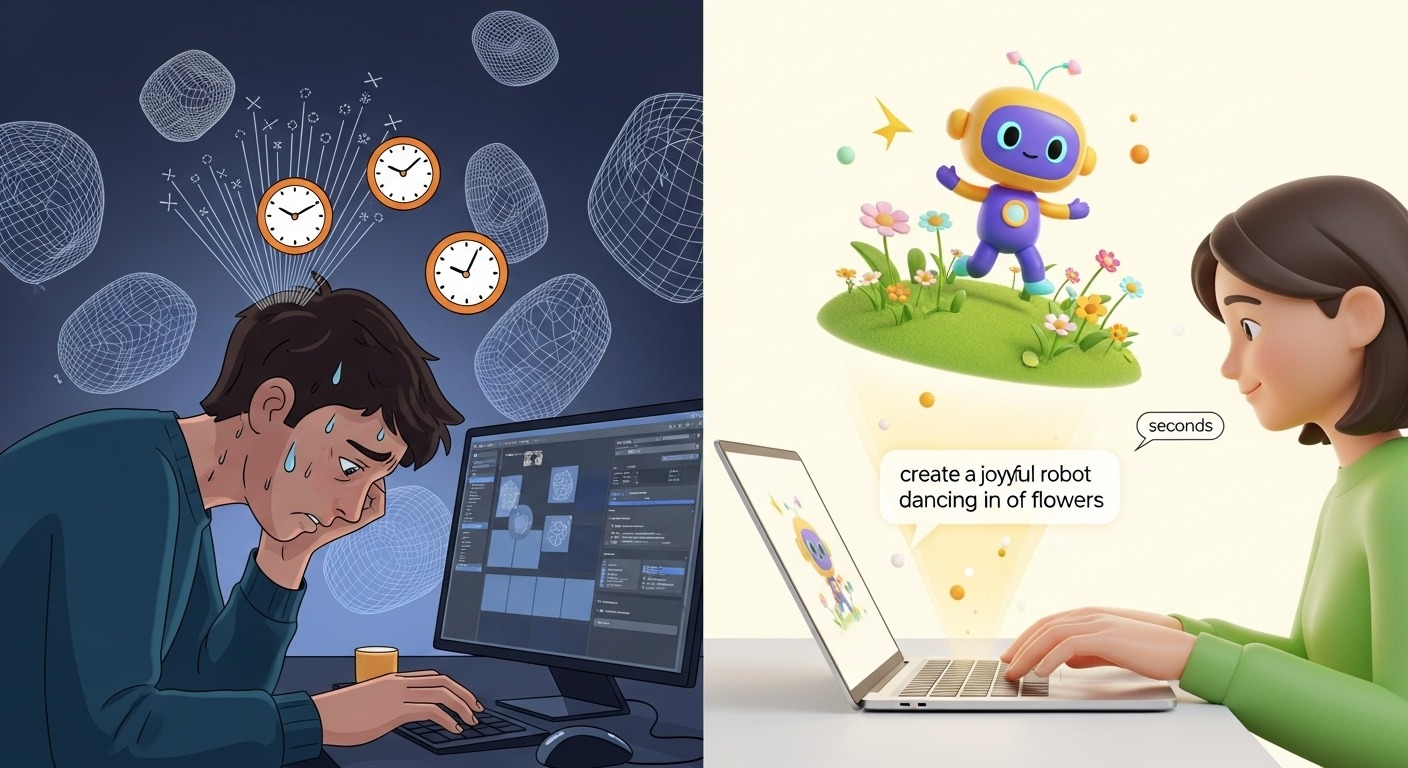
How Long Does It Actually Take? Real Numbers You Need to Know
Let's cut straight to the numbers that matter. Traditional 3D modeling requires a massive time investment that often catches beginners off guard. Creating a simple chair? That's 3-4 hours for a complete novice following tutorials. Want to craft a detailed character from scratch? You're looking at weeks, possibly months of dedicated work.
Now here's where things get interesting...
AI 3D model generators like Tripo AI are demolishing these timelines. We're talking about complex models generated in 100-120 seconds. That's not a typo – what used to take days now happens while you grab a coffee. Recent data shows AI reduces modeling time by up to 40% for simple tasks and slashes prototype creation by 60% in professional settings.
But speed isn't everything, right?
Learning Difficulty: Which Method is Easier for Complete Beginners?
Traditional Software: What You're Really Getting Into
Traditional 3D software throws you into the deep end immediately. Blender, Maya, 3ds Max – these powerhouses demand you learn, but with the best image to 3d model generator free ai free tools, which can ai generate 3d models, you can skip the steep learning curve:
- Vertex manipulation
- Edge flow principles
- Topology optimization
- UV unwrapping
- Subdivision modeling
The vocabulary alone is enough to make your head spin. Most beginners report feeling overwhelmed within the first hour, and the dropout rate? It's staggering.
AI Tools: Type What You Want, Get What You Need
Here's the beautiful simplicity of AI: type what you want, get what you need. Image to 3D conversion takes this even further – upload a photo, receive a model. No technical jargon, no complex interfaces, just pure creative expression.
Tripo AI's Algorithm 3.0 (now in beta!) understands natural language with remarkable accuracy. Want a "steampunk robot with brass gears and Victorian aesthetics"? Just type it. The AI handles all that complex geometry construction behind the scenes. For those ready to level up their prompt game, check out this guide on mastering prompt engineering for text to 3D models.
The Problem Nobody Warns You About: Cleanup Time
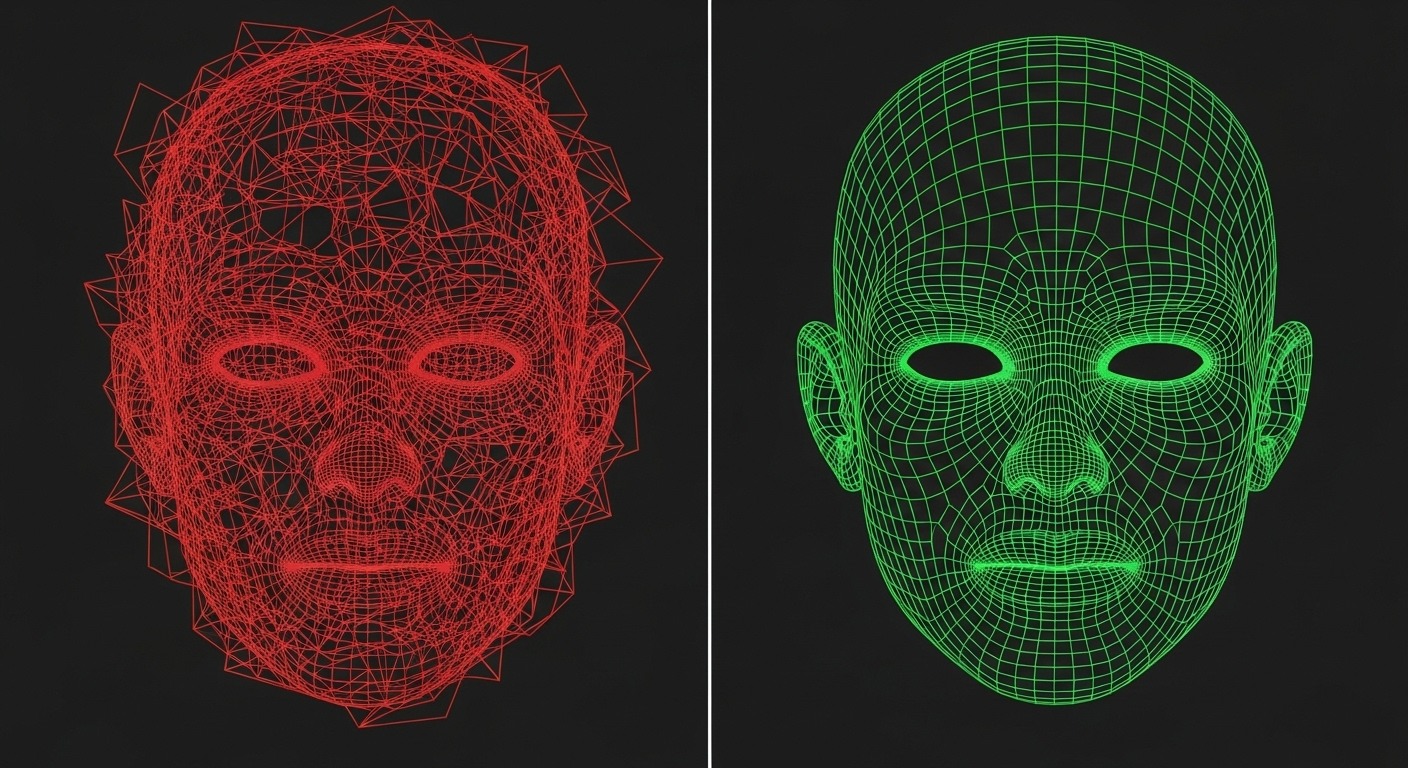
Here's where most comparisons drop the ball – they only look at initial generation time. But what happens after your AI creates that model?
The Topology Nightmare
Many AI 3D model generators produce what looks amazing at first glance. Zoom in, though, and you'll discover:
- Holes in the mesh (non-manifold geometry)
- Overlapping faces
- Chaotic polygon distribution
- Impossibly high polygon counts
One user reported spending 8 hours fixing a "60-second" AI model to make it animation-ready. That's not faster – that's a different kind of slow. For those dealing with animation-specific challenges, learning how to retopo an AI character model for animation becomes essential.
Manual Modeling: Slow but Steady
When you build manually, you control every polygon. Yes, it takes longer upfront, but the model is clean, efficient, and ready for any pipeline. No surprises, no hidden repair time.
Side-by-Side Comparison: Real Project Timelines
Let's break down actual project timelines with realistic expectations:
Note: Even with Tripo AI's superior topology, some refinement is normal. The key difference? You're polishing an already-solid foundation rather than fixing fundamental flaws.
The Quality Question: Pretty Pictures vs. Usable Assets
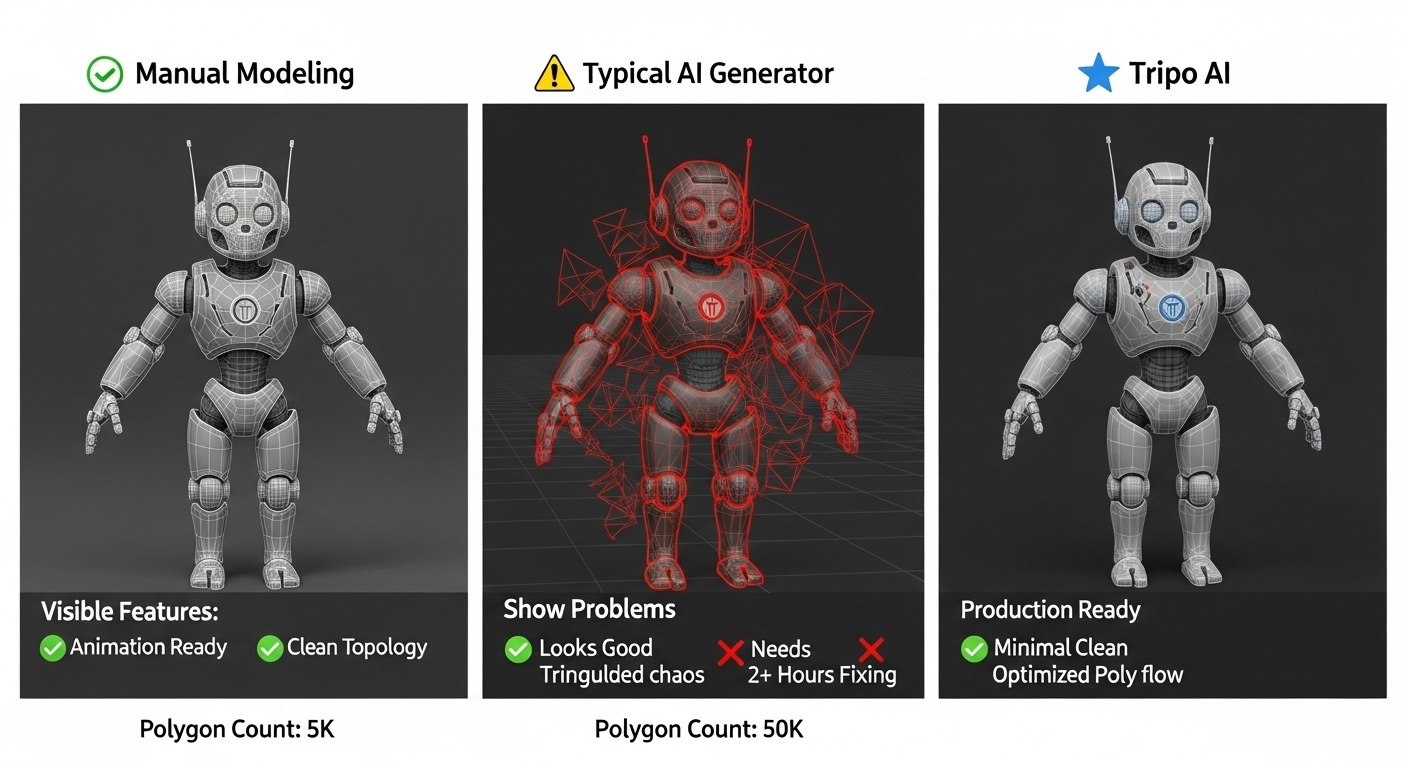
Manual Modeling Results
- Complete creative control
- Professional-grade topology
- Predictable deformation for animation
- Optimized for any pipeline
Typical AI Generator Results
- Visually impressive results
- Often unusable for professional work
- Require extensive manual cleanup
- Topology issues plague most outputs
Tripo AI's Game-Changing Approach
Here's what sets Tripo apart in the AI 3D model generator space:
Algorithm 3.0 doesn't just create pretty pictures – it generates genuinely usable assets. The system understands proper edge flow, maintains watertight geometry, and optimizes polygon counts automatically. This isn't just marketing speak; it's engineering that solves real problems.
How to Fix Holes in 3D Models (When You Need To)
Even with the best tools, you might encounter models with gaps. Here's a quick Blender tutorial for fixing those pesky holes:
Method 1: Quick Fill (For Simple Holes)
- Enter Edit Mode (Tab key)
- Switch to Edge Select mode
- Alt + Click the hole's edge loop
- Press F to fill
Method 2: Grid Fill (For Clean Topology)
- Select the hole's edge loop
- Ensure even number of vertices
- Face menu > Grid Fill
- Adjust Span and Offset for best results
Method 3: Bridge Edge Loops
- Select first edge loop (Alt + Click)
- Add second loop (Shift + Alt + Click)
- Right-click > Bridge Edge Loops
Pro tip: Use Blender's 3D-Print Toolbox addon to verify your model is watertight before exporting. For a more streamlined workflow, consider the Tripo-Blender plugin that transforms images to 3D models in minutes.
The Cost Factor: Time is Money
Manual Modeling Costs:
- Software: Free (Blender) to $2,000+/year (Maya)
- Learning Time: 200+ hours to basic proficiency
- Opportunity Cost: Months before creating portfolio-worthy work
AI Modeling with Tripo:
- Free Tier: Generous credits for experimentation
- Pro Plans: Fraction of traditional software costs
- Learning Time: 30 minutes to proficiency
- Immediate Results: Portfolio pieces from day one
Which 3D Modeling Path is Right for You?
The answer depends on your goals:
Choose Manual Modeling If:
- You want to become a professional 3D artist
- Complete control over every detail is essential
- You have months to invest in learning
- Technical mastery excites you
Choose AI Modeling (Specifically Tripo AI) If:
- You need results fast
- You're focused on the end product, not the process
- Clean, usable models matter more than manual craftsmanship
- You want to iterate quickly on ideas
For beginners looking to excel in either path, these tips for excelling in AI 3D art and modeling provide valuable insights.
The Future is Hybrid
Here's the insider secret: professional artists are increasingly adopting a hybrid approach. They use AI 3D model generators like Tripo for rapid prototyping and base mesh creation, then apply manual techniques for final refinements. It's not AI vs. manual anymore – it's AI and manual working together.
With Tripo Studio's AI-native workspace, this hybrid workflow becomes seamless. Generate with AI, refine with traditional tools, all in one environment. No more jumping between applications or dealing with compatibility issues.
The Verdict: Speed Isn't Just About Generation Time
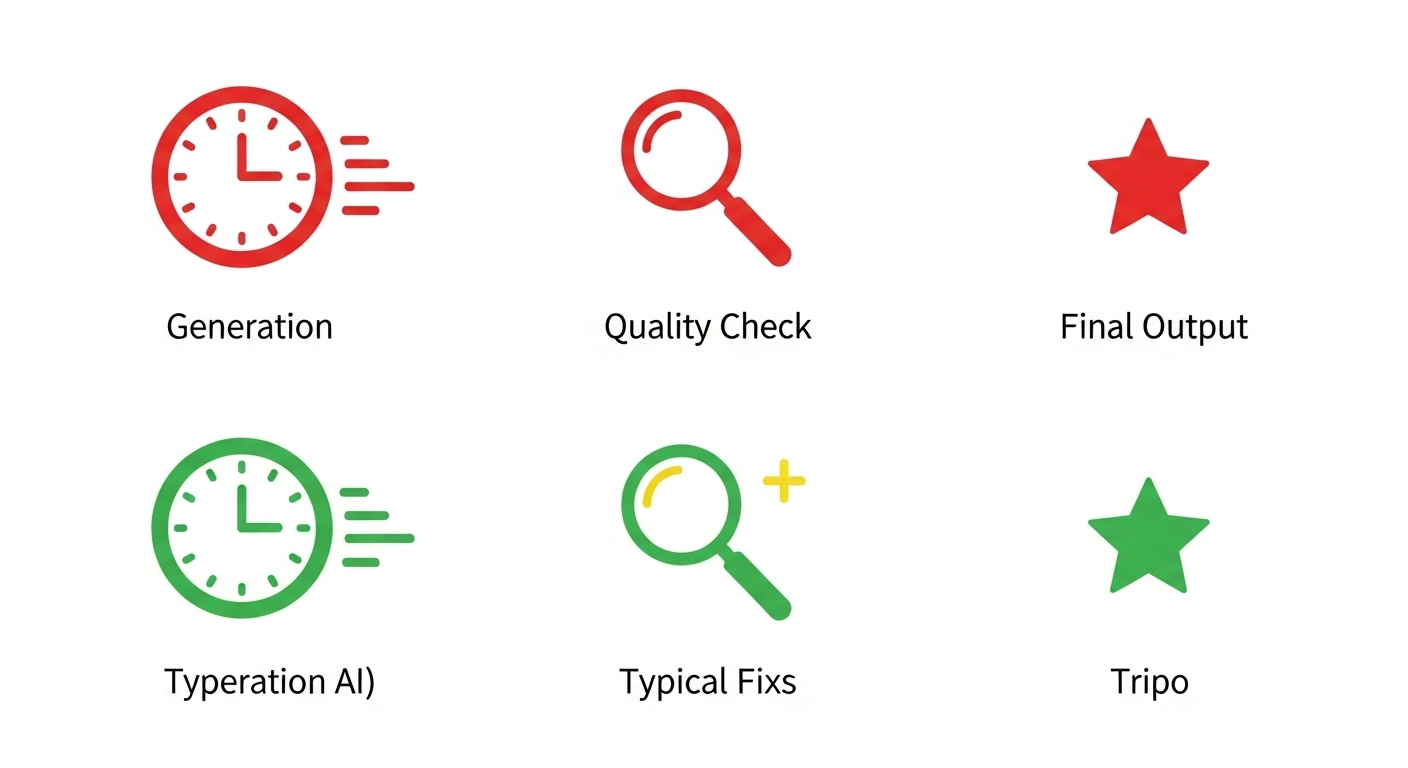
When we talk about the fastest way to create 3D models, we need to consider the complete pipeline:
- Initial creation
- Cleanup and optimization
- Final output quality
Traditional AI generators win on step 1 but fail spectacularly on steps 2 and 3. Manual modeling maintains consistency but can't compete on speed.
Tripo AI's Algorithm 3.0 changes this equation entirely. By generating clean, topology-optimized models from the start, it delivers true end-to-end speed. No hidden repair time, no messy geometry, just usable assets in minutes.
Taking Your Models Further
Once you've created your perfect 3D model, what's next? For those interested in bringing digital creations into the physical world, this guide on enhancing your 3D printing experience walks beginners through the entire process – from ensuring watertight models to choosing the right materials.
Join the 3D Revolution
The data speaks for itself: the AI 3D modeling market is exploding from 2_billionin_2025_toaprojected_15 billion by 2033. Over 70% of companies are already using or planning to adopt AI-powered 3D tools.
For beginners, the choice is becoming clear. Why spend months learning complex software when you can start creating today?
Ready to experience the future of 3D creation? Try Tripo AI's Algorithm 3.0 beta and see why over 2 million creators have already made the switch. Generate your first professional-quality model in under 2 minutes – no experience required.
Start Creating with Tripo AI →
Want to dive deeper into 3D modeling? Check out resources from Blender.org, join communities like Polycount, or explore tutorials from Blender Guru. The 3D creation ecosystem is vast and welcoming – whether you choose AI, manual, or both, there's never been a better time to start your journey.
You May Also Like: More About Image to 3D Model
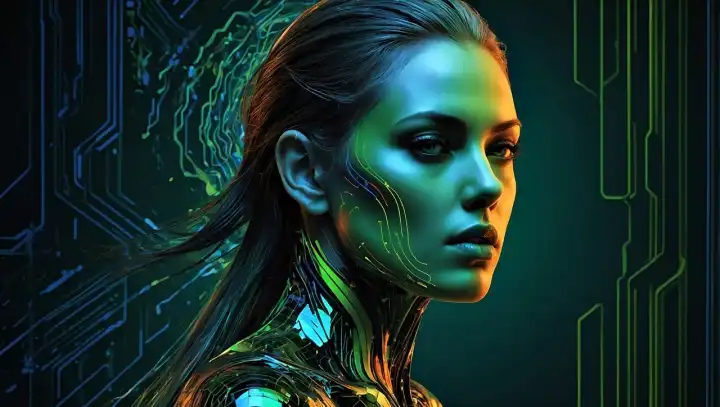
Master the art of AI-generated 3D models with Tripo3D. This guide provides step-by-step instructions on setup, model exporting, and troubleshooting, helping you streamline and enhance your 3D workflow.

Discover how Tripo, the AI-driven 3D model generator, transforms your photos into highly detailed 3D models effortlessly.

Explore how AI technology transforms a simple image into a detailed 3D model. Learn about the tools, techniques, and industries that benefit from this fascinating process.
Advancing 3D generation to new heights
moving at the speed of creativity, achieving the depths of imagination.

